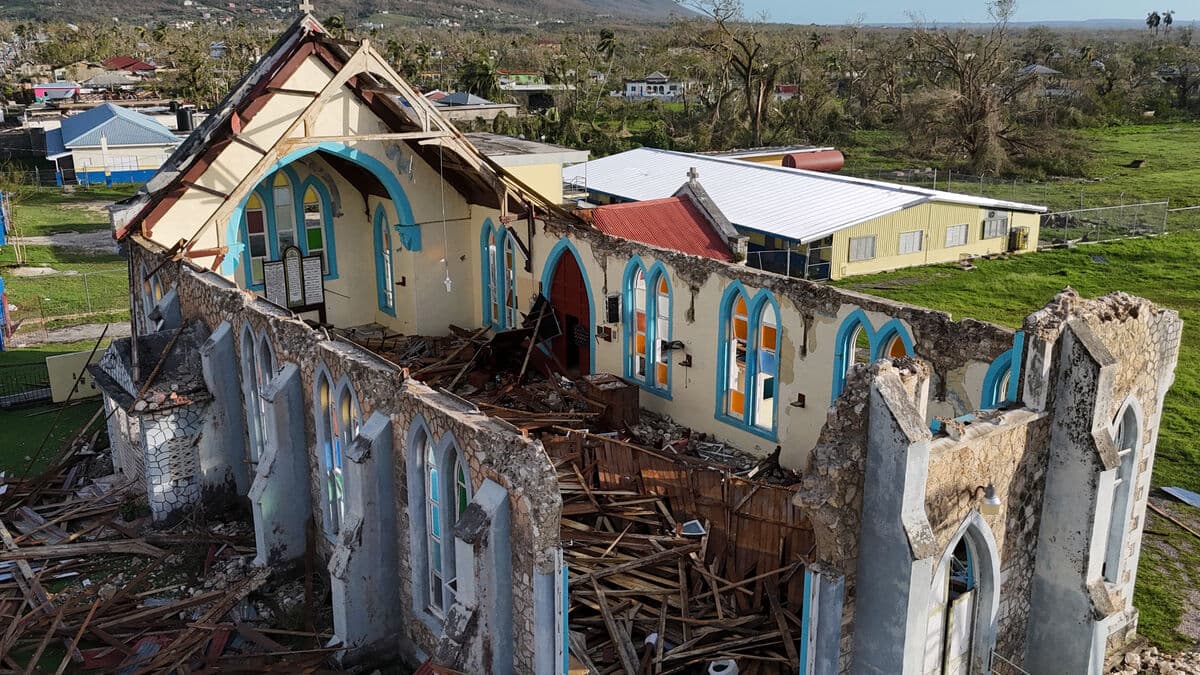I rushed out and sought shelter with a friend, continues Thomas, who lives on the northern coast of Jamaica, which faces Cuba in the Caribbean Sea.
Fisherman George "Larry" Brown says it was difficult to foresee the danger on Tuesday morning.
It was only raining a little.
So he stayed home too. But in the evening Melissa's full power came. Brown looked up and saw his roof disappear.
There was a bang, and it just started peeling off.
The storm, called Melissa, has been ravaging island nations for several days as it moves north through the Caribbean. The damage is still difficult to assess, but evacuations appear to have kept the death toll down. Four deaths have been confirmed in Jamaica, while reports from Haiti point to around 40 deaths there.
According to US statistics, Melissa shares first place as the strongest hurricane to ever make landfall in the Atlantic. Melissa's maximum sustained winds when it reached Jamaica were measured at 83 meters per second, the same level as two previous legendary hurricanes: Dorian, which struck the Bahamas in 2019, and the Labor Day hurricane, whose devastation over the Florida Keys in 1935 is still talked about in the area.
In Jamaica, Storm Gilbert in 1988 has been a kind of benchmark of horror for what hurricanes can do – until now.
Gilbert has no chance against this, "Larry" Brown tells AFP.
The most common way to classify storms is by wind speed. For it to be a storm, the wind must reach about 24.5 meters per second (88 kilometers per hour). Anything over 32.7 meters per second is a hurricane.
However, really strong storms can have such extreme winds that the description hurricane – or typhoon or cyclone as they are also called in different places – is not quite enough. In such cases, the Saffir-Simpson scale (SSHS) is often used. This goes from category 1 to 5, where a one has winds of 33–42 meters per second and a five over 70 meters per second.
Category 5 poses a catastrophic risk of damage, with even stable buildings likely to have their roofs and walls destroyed. Most areas affected by a Category 5 storm will be uninhabitable for weeks or months afterward.





